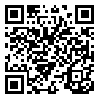Volume 6, Issue 4 (2015)
LRR 2015, 6(4): 15-38 |
Back to browse issues page
Download citation:
BibTeX | RIS | EndNote | Medlars | ProCite | Reference Manager | RefWorks
Send citation to:



BibTeX | RIS | EndNote | Medlars | ProCite | Reference Manager | RefWorks
Send citation to:
Baharloo H, Mahmoodian S S. Comparative Analysis of Syllable and Common Syllable Patterns in Russian and Persian Languages. LRR 2015; 6 (4) :15-38
URL: http://lrr.modares.ac.ir/article-14-4812-en.html
URL: http://lrr.modares.ac.ir/article-14-4812-en.html
1- Assistant Professor in Russian, Tarbiat Modares University, Tehran, Iran
2- Ph.D. student of Russian Language, Tarbiat Modares University, Tehran, Iran
2- Ph.D. student of Russian Language, Tarbiat Modares University, Tehran, Iran
Abstract: (7540 Views)
Although syllable is not a meaningful unit of language, it has major functional roles in language. One of the most important functional roles of syllable is the formation and organization of language’s phonetic system. Any language has its specific syllable construct (patterns), and specific restrictions for the combination and use of sounds in the syllable level. In addition, various languages usually tend to keep their syllable rules; so, syllable patterns usually are not loaned by languages. Therefore, it can be said that part of differences in phonetic systems in various languages are caused by differences in their syllable structure. On the other hand, due to its main function (formation and organization of language’ phonetic system), syllable is directly associated with the learning of language’s phonetic system. The present article deals with comparison of the common syllable patterns in Russian and Persian languages. The results show that the patterns of the Russian syllable are more diverse than that of Persian. Most important differences that are often problematic for Iranian learners are the heavy consonant cluster in the onset of Russian words and syllables, as well as the frequency of multi-syllabic words in Russian language.
| Rights and permissions | |
 |
This work is licensed under a Creative Commons Attribution-NonCommercial 4.0 International License. |






